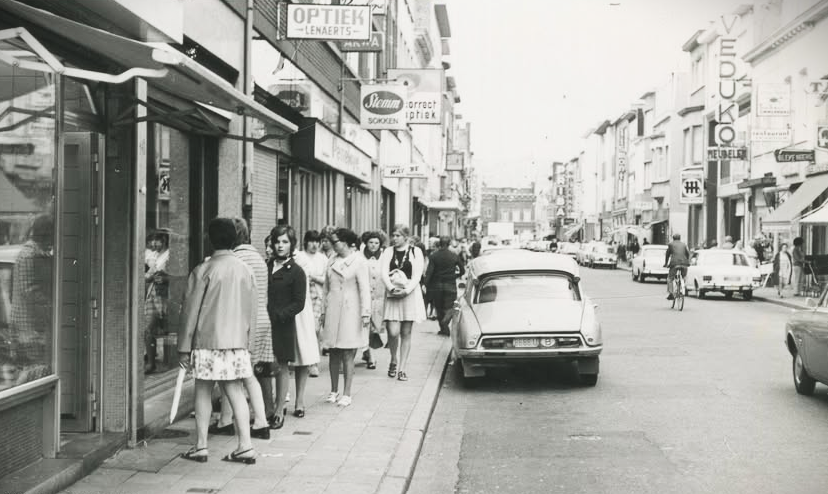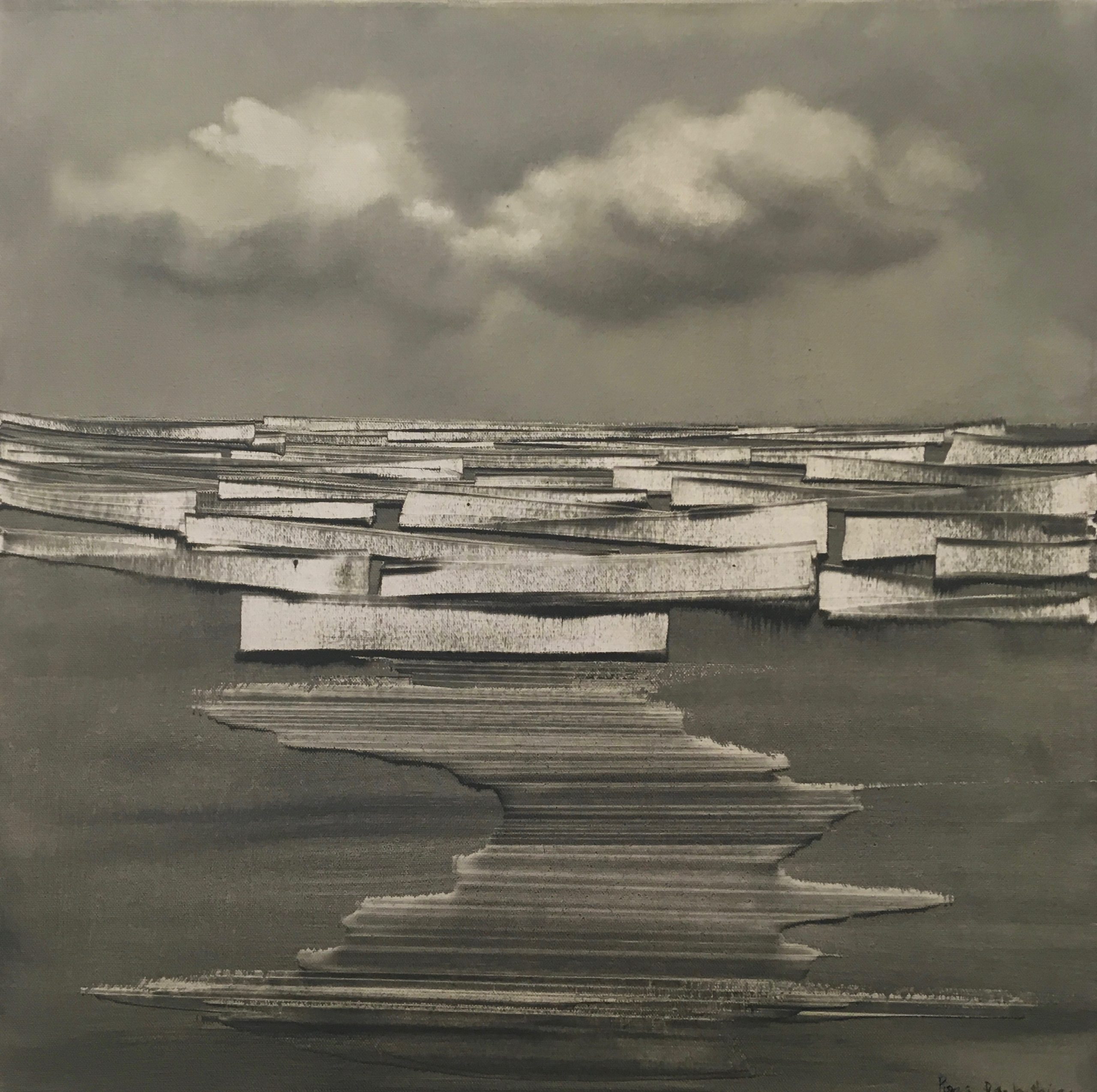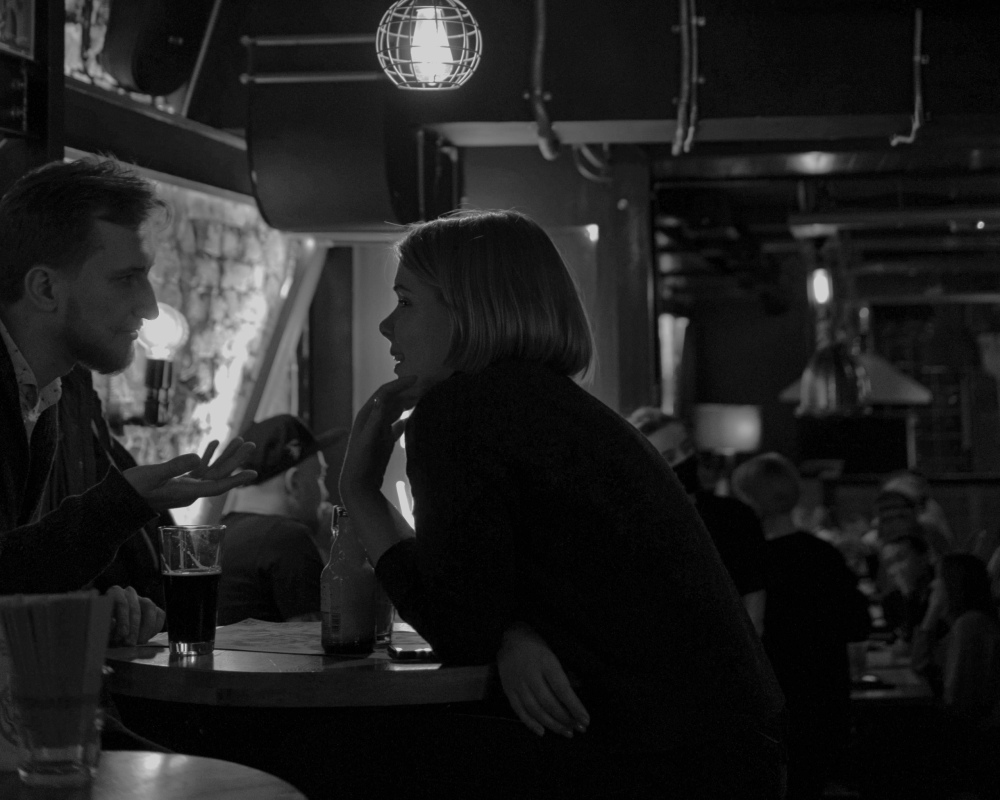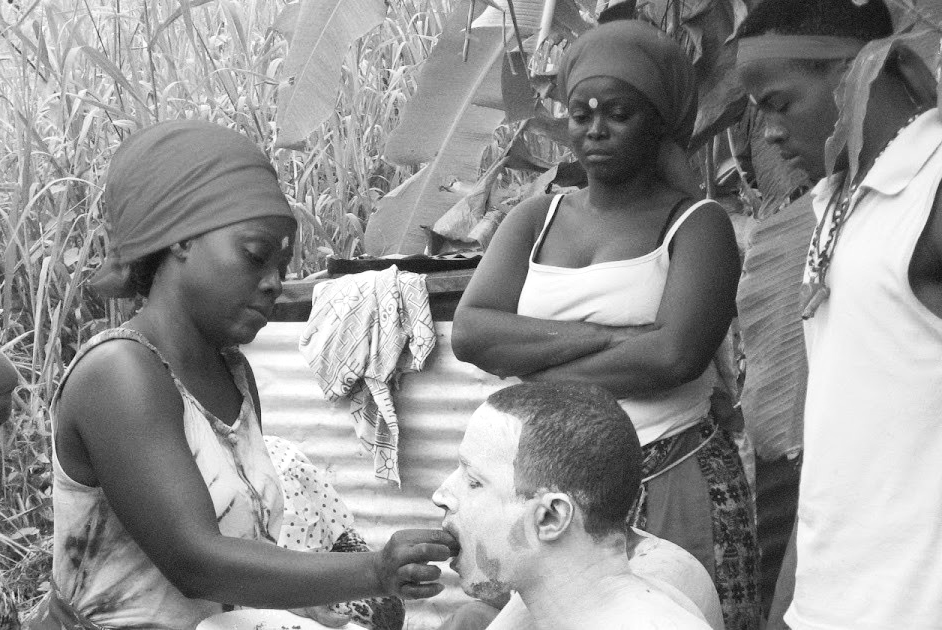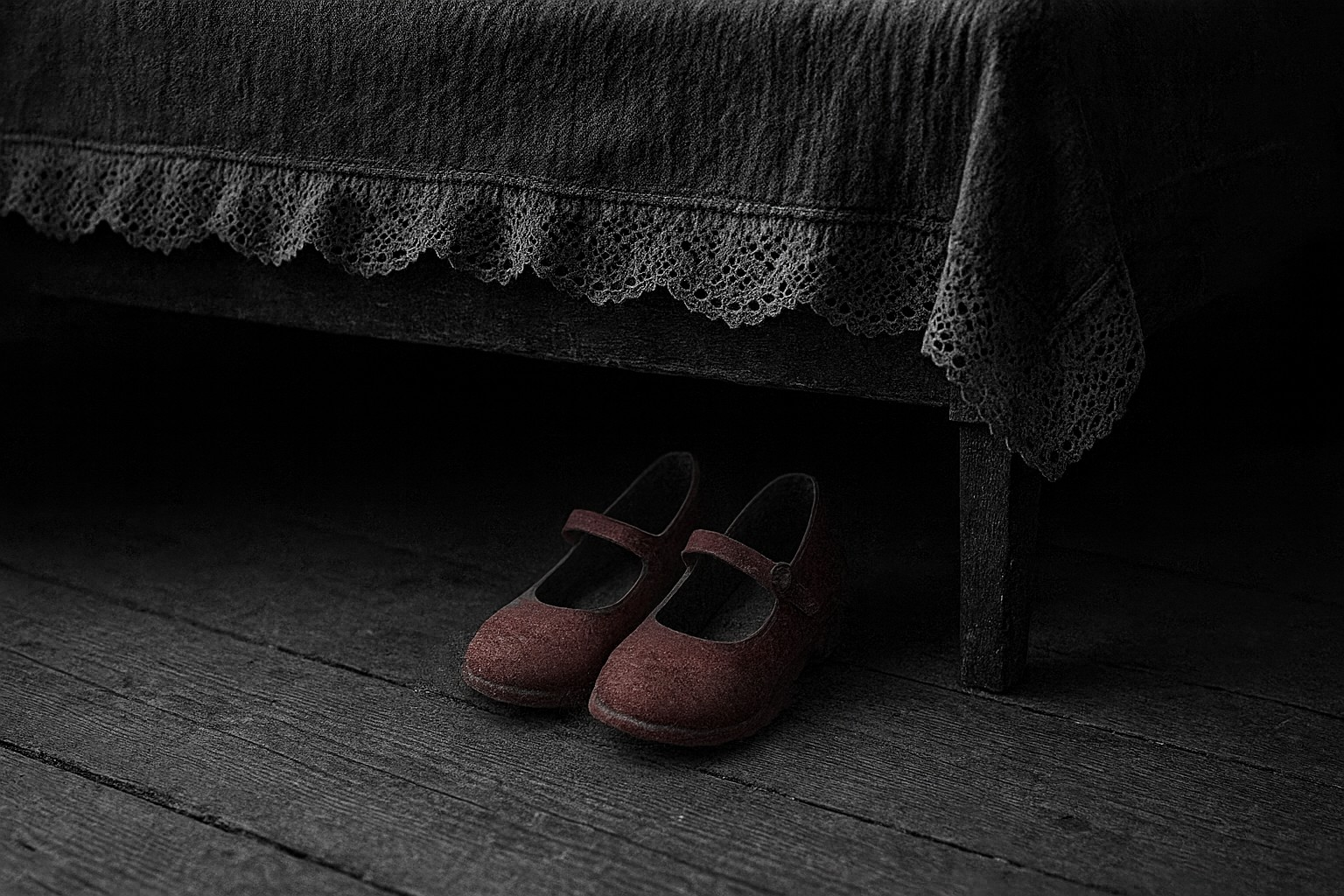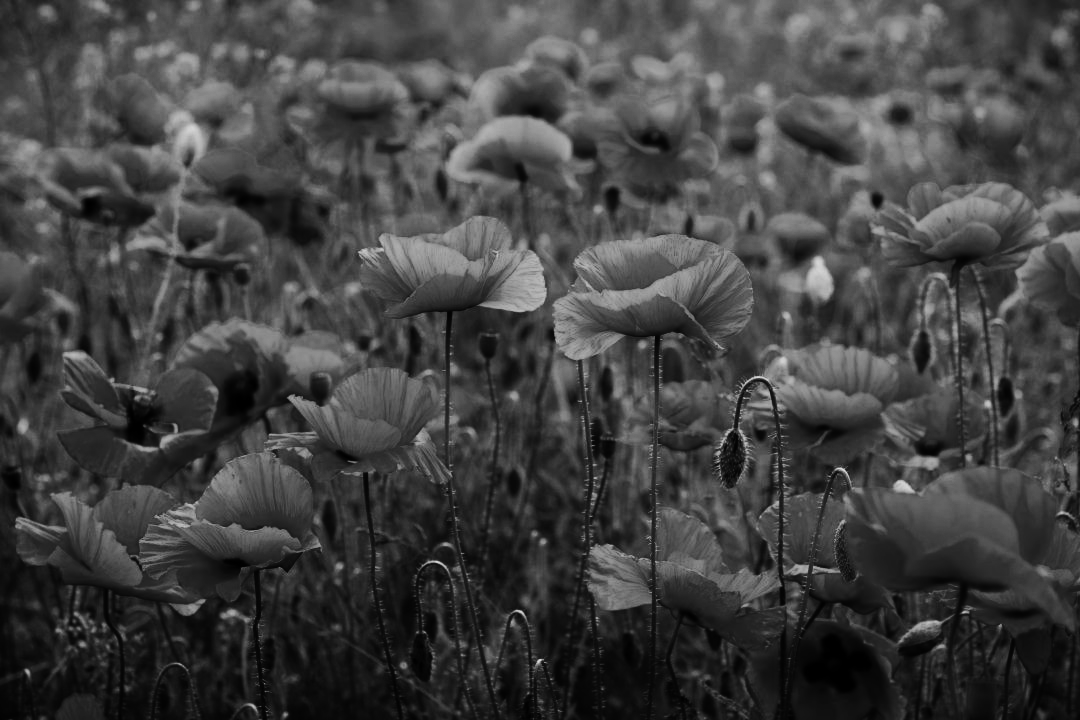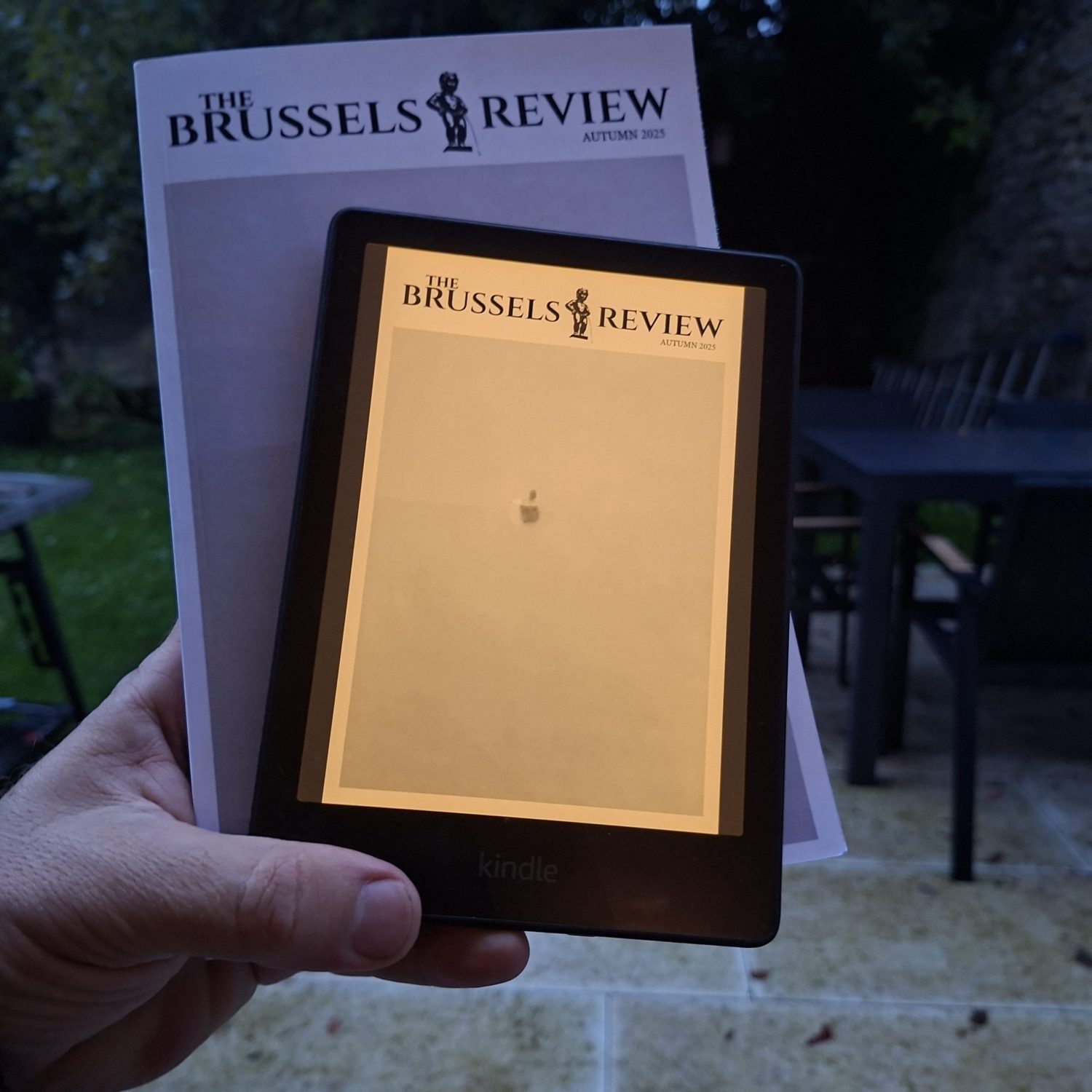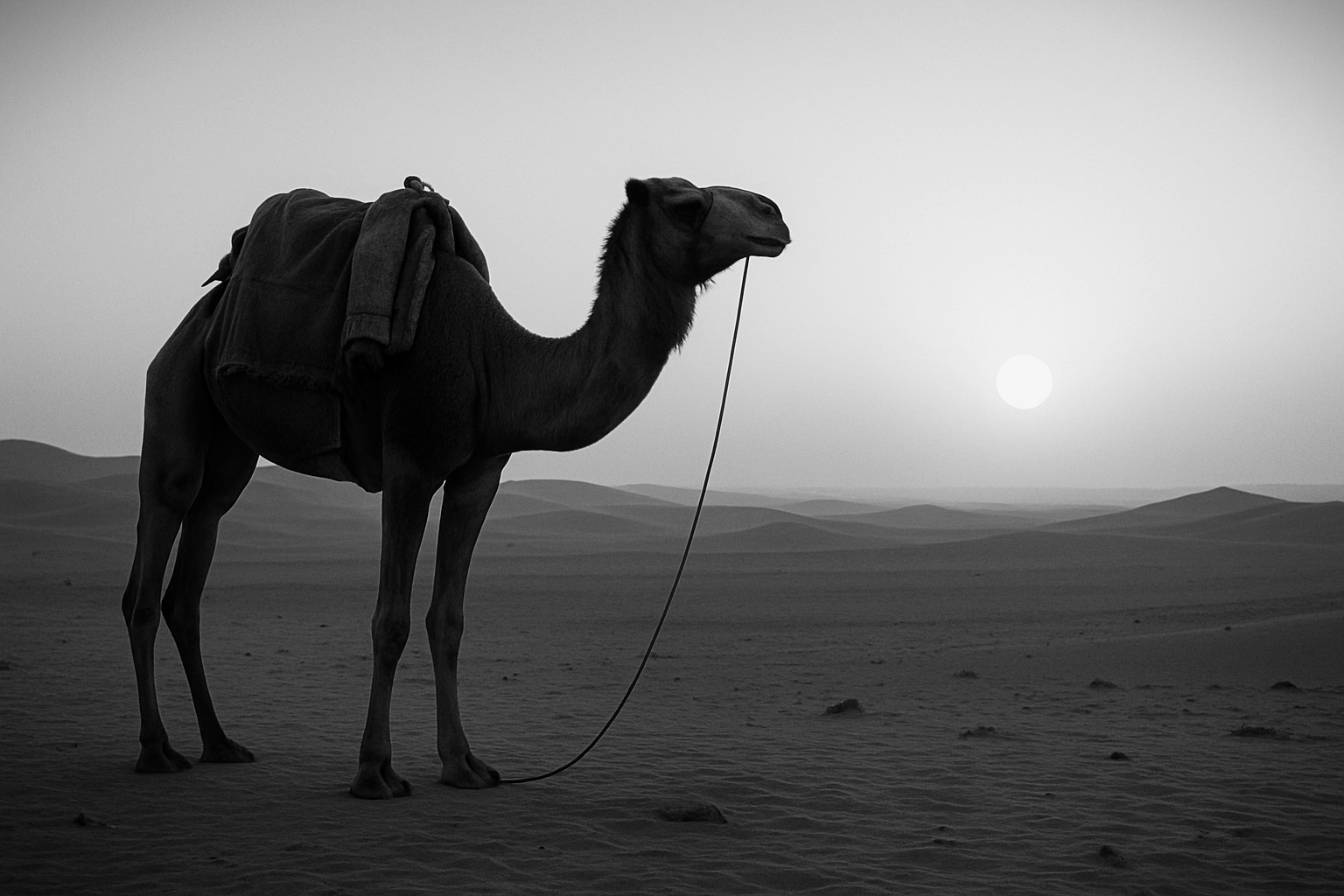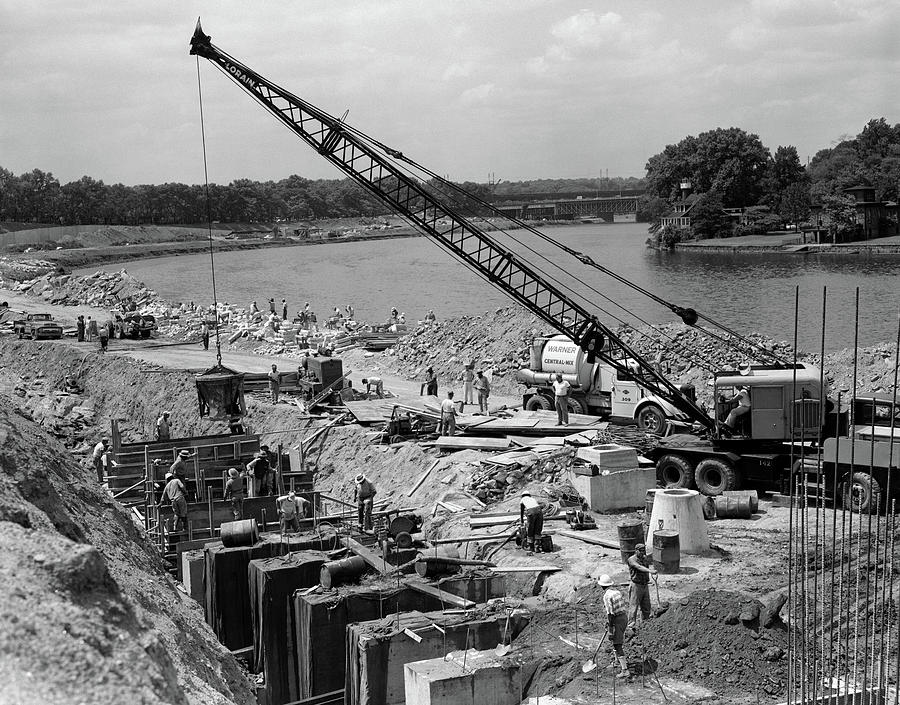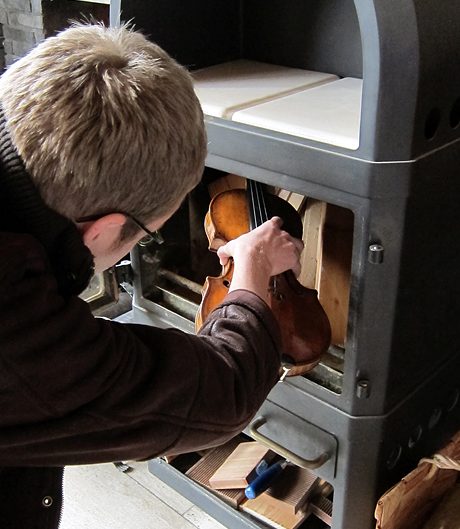The pūjari, Hindu priest of the temple, walked up the center aisle to the front of the stage, where members of the Bharatiya Vrund Gaan (BVG): Indian National Choir of England stood ready to begin our joint evening concert—the women and girls in floor-length white dresses punctuated by pink and gold sashes, strings of jasmine flowers flowing down from their hair, the men and boys in blue Nehru collar knee-length shirts with white pants.
As the auditorium in the Shree Radha Krishna Temple: Indian Association Oldham— a town in Greater Manchester—quieted, the pūjari blew into the shankh, a spiral conch shell cupped in his right hand, sending forth a trumpet-like sound, which heralded the opening of the proceedings. With his left hand, he simultaneously rang the ghanta, a brass bell symbolizing an auspicious beginning.
After the pūjari exited, Rakesh Joshi, the leader of the choir, stood in the center of the stage beside his harmonium, an instrument that looks like a combination of an accordion and a keyboard and makes sounds akin to an organ. The tabla drummer, sitting cross-legged on the floor on the right side of the stage, began to set the rhythmic pattern, creating a variety of tones with slaps, finger taps, and palm slides.
Sitting in the auditorium with members of my chorus—SANS (Sharing a New Song)—I found the combination of the two instruments mesmerizing. The tabla set the foundation, while the vibrating sounds of the harmonium transported me into another world, and I felt so lucky to be there. To start the concert, Rakesh had introduced two traditional Indian folk songs. The first was a “mood of summer” song, the second, as he wryly noted, was a counterpoint—an Indian monsoon song. There was a lighthearted bounciness to both songs that surprised me.
***
We had arrived in Manchester from Boston, Massachusetts two days earlier. SANS was founded in 1983, during the Cold War, in an effort to make connections between the people of the United States and the Soviet Union. It began with multiple trips to sing with choruses in the USSR, and SANS has since traveled to many parts of the world and to different areas within the United States.
In 2023, we had gone to Alabama and Mississippi on a civil rights history and singing tour. To build upon that trip, we headed in July, 2024 to England, historically the center of the slave trade and of a vast colonial empire. Great Britain had introduced slavery into, and colonized, twenty Caribbean countries for three centuries. We were in England to learn about the history of the Black people who migrated to England from those countries and to connect with various groups such as the BVG that represent both the West Indian and South Asian diasporas.
As the SANS mission states:
International understanding relies on personal connections and relationships. Sharing A New Song (SANS) has worked to foster that understanding by building bridges across our common human heritage, transcending barriers, and making connections across cultures through our love of choral singing.
Singing in Boston and around the world, SANS sparks transformative connections that can change the world, one song at a time.
***
Before the BVG concert began, we had sat in the auditorium with members of the choir from each of our respective voice sections to learn the words to the song “Aakashaganga.” Aakash refers to the Milky Way and likens it to the river Ganga (Ganges in English)—a river in the sky. This song in the Gujarati language talks about the sun and the stars and how they and the land and rivers on earth belong to everyone. Learning the words themselves was initially difficult, and we also had to learn some guttural humming, in some ways echoing the sounds coming from the harmonium. When the two choruses sang it together, we shared lyric sheets with the BVG singers, and the encouragement and comradery we received from them helped us to do a more than passable joint rendition of the song.
From our repertoire, we had planned to jointly sing “I Have a Dream,” a song composed by our chorus leader, Donnell Patterson—a teacher, arranger, and composer—based on the words of Martin Luther King. We ran out of time before the concert to practice our song with them. BVG had been sent the music and words before our trip, but the first time that their members actually rehearsed it with us was while we were all on stage in the middle of the concert. Donnell went over the song with all of us, simultaneously teaching the audience sections where they could join in. Nothing fazes him. The two choruses and the audience learning and performing this particular song at the same time created a bond among all of us—making connections across cultures in the moment. I have a dream today . . . that we shall overcome.
Our portion of the concert ended with Sister Sledge’s “We Are Family”—something we were all feeling at that moment. Afterwards, we were excitedly talking with members of the BVG—some of whom had earlier suggested that we all go on a joint tour to India—when we were told that our bus was leaving in five minutes whether we were on it or not.
***
To open our concert two days later with the Birmingham Community Gospel Choir (BCGC) at the Ebenezer Mission Hall, their dynamo of a leader, Maxine Brooks, described our evening together as a “beautiful collaboration with our brothers and sisters from the United States . . . a collaborative of hearts and minds bringing messages of worship and truth and peace.” The whole night was rousing and uplifting in a way that gospel concerts are, from the BCGC singing “How Excellent” to our singing of “I Promised the Lord that I Would Hold Out” to our joint rendition of “Total Praise,” which we had sung with students at Jackson State University in Mississippi on our 2023 trip.
The highlight of the evening for me was what occurred after the concert was officially over. I was standing talking to someone in our chorus, when all the heads in the room turned to the area in front of the stage. Donnell and Ms. Brooks had broken out in a duet, with Donnell on the piano, together singing the gospel song “I Don’t Feel Noways Tired,” which includes the repeated line “I don’t believe he brought me this far,” ending with “just to leave me.” The feeling I had watching them was something akin to what I would imagine it would be like to watch your parents suddenly burst into song and feeling proud that you are a member of this family. And then, as had happened with our concert at the temple, we heard the dreaded announcement that the bus was waiting for us and that we needed to leave.
***
Carlton Walker was our tour guide. His parents had come to England from Trinidad as part of the Windrush generation in the 1950s, named after the ship, the Empire Windrush, which arrived in Essex, England from Jamaica in 1948. As Carlton told us, The British Nationality Act of 1948 gave “citizens of the United Kingdom and Colonies status and the right of settlement in the UK to everyone who was, at that time, a British subject by virtue of having been born in a British colony.” Britain was desperate to have workers come from its colonies to help rebuild the country after World War II. However, they weren’t always greeted in the “Mother Country” with open arms. In an essay that he read to us on one of our bus rides, Carlton wrote:
Finding good accommodation was perhaps the most difficult task. Even as late as 1952 a leaflet produced by the Jamaican Ministry of Labour warned those coming to England that; “Not only are rooms scarce, but you may be refused because you are coloured.
Despite that, he noted, The West Indians did indeed play a huge role in rebuilding Britain. They ensured the newly created NHS (National Health Service) was a success, they worked on public transport and in factories. Some went down the mines, others joined or re-joined the Armed Forces. It is a fact that Britain could not have bounced back so quickly after the war, if at all, were it not for the efforts of tens of thousands of West Indians.
On our bus trips between cities, Carlton shared with us pieces that he had written over the past few years, such as the sections I quoted above, which he ultimately sent to us after the trip was over. They address England’s relationship to its colonial and slave trade history and its treatment of immigrants from the Caribbean. As importantly, he discussed with us his complicated relationship to his own history of being Black in England.
Other than a short period in his younger days, when he led tours with his sister in Spain, Carlton had never led a trip like this before. His day job is writing proposals for an international law firm. The tour company organizing this trip for us had originally asked his sister, who is, in fact, a tour guide, however she was unavailable, and she suggested that they ask her brother.
Carlton described to us how when he was given this offer, how excited he was that a Black choir from the United States was coming to learn about Black British history. He looked up SANS online and saw this predominately white chorus with a few Black faces, including, most prominently, our music director, Donnell. He initially thought that he must have the wrong SANS and searched further on the internet to see whether he could find the correct one. Eventually realizing that he had found the right one, he decided it might actually be a valuable experience to tour with a chorus with our demographic makeup, a group so committed that we were willing to spend time and money to learn about Black history in England.
For our trip, we had a WhatsApp chat group. The first message Carlton sent to us, the day before we were to fly to London, included a link to Playing for Change’s version of Marvin Gaye’s “What’s Going On?”—his great anti-war ballad. For me, this set just the right tone both for the trip and for our upcoming relationship with Carlton. After the trip, our chat group exploded into a continuing conversation, including the posting of photographs, videos, songs, and articles—a sign of how much this trip had meant to all of us, including Carlton.
I had shared with Carlton a published essay I had written about SANS’s 2023 trip, and he used a quote from it in one of his post-trip posts as a jumping off point to convey how much this trip had meant to him:
In his essay Peter wrote “The entire afternoon was an affirmation of the many powerful roles that music can play, most importantly, as a means to connect across generations and among people of different races.” I thought I understood your name (SANS) after your first concert in Manchester, but now I understand that it is not just a group name—it is truly a MISSION! My admiration for you all to undertake that and other journeys is immense and I am proud to know and to have spent time with you all. Now, I catch myself when relating my time with you, saying “we” instead of “they.” That is quite an impact!! With Love and Affection my friends.
The feeling was completely mutual, and I was, of course, touched and honored that he had used a quote from my essay as a starting place for his thoughts.
***
On our way from Manchester to Birmingham, we stopped in Sheffield, once the center of the steel and cutlery industries in England. The first stainless steel was developed here in 1913. Similar to what has happened in many industrial cities in the United States, much of the manufacturing has since left the city.
We were here to spend part of the day at SADACCA (Sheffield and District African Caribbean Community Association), a self-help organization founded in 1986, though it had existed in a different form as the West Indian Association since 1955. Due to budget cuts during the austerity period when David Cameron was the Tory prime minister (2010-16), the organization almost collapsed, before it was able to reconstitute itself in 2015.
Created in response to the difficulties West Indian immigrants faced in Sheffield, SADACCA is and has been many things. Clinton McKoy, who began as a youth worker in SADACCA’s Saturday school, spoke to us soon after we arrived. Natty in a black flat cap and black jacket, while sporting a grey moustache, he walked through the door that opened from the back patio into the meeting area, where SANS members were packed around circular tables and in all the spaces in between. Clinton animatedly told us about his father’s migration to England from Jamaica as part of the Windrush generation in the 1950s and how he had joined his father in 1962 when he was nine years old. He spoke of the subtle and not-so-subtle racism that his family experienced—seeing signs that read “No Dogs, No Blacks, No Irish” in storefront and pub windows, or at places that might offer accommodations. Clinton also emphasized the fact that things are still very difficult for the West Indian community with regards to education, unemployment, and mental health.
Carlton, on one of our bus rides, talked to us about some of the health disparities as well:
The COVID-19 pandemic starkly highlighted these disparities, with black and Asian communities experiencing higher infection and mortality rates. It has also been revealed that black women are four times more likely to die in childbirth than their white counterparts, due often to poor treatment by hospital staff.
Clinton’s work at the Saturday school was designed to support youth whose schools were failing them, with low expectations steering them toward low-paying industrial jobs—continuing a pattern that the earliest migrants had faced. The school also taught the young people about the history of the African diaspora, hoping to instill an understanding of and sense of pride in their heritage.
Without the usual accompaniment of his guitar, Clinton agreed to sing to us a song he had recently written about the feeling immigrants have of being torn between two places and the difficulty of sometimes calling anywhere home. The final lines sum up the dilemma: The people can be hostile/ The country can run cold/ Shall we pack up and leave tomorrow/ Or is it here where we’ll grow old?
There were audible sighs among our group throughout his singing of the song.
***
There is a piece to the Windrush story that you really want to believe can’t possibly be true. I’ll let Carlton tell the story with excerpts from one of his essays:
In 2012, the government launched the ‘Hostile Environment’ legislation – a policy which tasked the NHS, landlords, banks, employers and many others with enforcing immigration controls – the aim was to make the UK hostile for undocumented migrants and ultimately push them to leave. News of the scandal that followed began to surface in 2017 after it emerged that hundreds of Commonwealth citizens, many of whom were from the ‘Windrush Generation’, had been wrongly detained, deported and denied legal rights.
Because the Windrush Generation had a legal right to come to the UK, they neither needed nor were given any documents upon entry to the UK, nor were documents needed following changes in immigration laws in the early 1970s.
Matters were made worse in October 2010 when the Home Office destroyed thousands of landing card slips recording Windrush immigrants’ arrival dates in the UK dating back to the1950s and 1960s – these papers were often the last remaining record of a person’s arrival date. The Home Office also placed the burden of proof on individuals to prove their residency predated 1973, by demanding that they produce at least one official document from every year they had lived here. (Boldface is mine.)
Falsely deemed as ‘illegal immigrants’ / ‘undocumented migrants’ they began to lose their access to housing, healthcare, bank accounts and driving licenses, which for many also resulted in losing their jobs and homes. Many were placed in immigration detention, prevented from travelling abroad and threatened with forcible removal, while others were deported to countries they hadn’t seen since they were children.
History really is shocking at times. And the worst of it is, this has still not been fully resolved in 2024. There remains a large backlog of cases.
***
On our one full day in Birmingham, we were taken on a walking tour by Marcia, who had left her job as a history teacher because she felt that the national curriculum did not adequately address the complete truth of British history, and her colleague Garry from the Black Heritage Walks Network. Both of them wore black shirts and jackets with the name of their organization printed on them. Marcia carried a portable speaker and microphone slung over her shoulder.
We learned about industrial Birmingham’s role in the slave trade, from producing the ship parts that transported enslaved Africans and the chains that constrained them to forging guns to exchange with local Africans who were willing to deal with European slave merchants. “Manilla” bracelets— horseshoe-shaped, with lozenge-like ends facing one another—were produced to be used as trading tokens or currency to, in some instances, purchase enslaved Africans. The original ones in Africa were made of copper, and Marcia pointed out that the ones made in Birmingham were of a lesser quality and made of brass—a mixture of zinc and copper. Nevertheless, they served their intended purpose.
Marcia brought us to the Library of Birmingham, a stunning ten-story modernistic blue and gold jenga-like arrangement of sugar waferish rectangles covered with overlapping metal circles—the rectangle at the entrance jutting out over the square. Once inside, we walked into a multi-story cylinder with shelves filled with books around its circumference, and escalators, the railings lit by blue lights, going up and down in the center.
We were there to see a new exhibit, “Intended for Jamaica,” by the photographer Tracy Thorne. The introduction to the exhibit states the following:
For more than 200 years, the stationary steam engine has been celebrated as a testament to the pioneering industrial heroes of Boulton [Matthew], Watt [James], and Murdoch [William], who played pivotal roles in Birmingham’s Industrial Revolution. Yet beneath this celebrated narrative lies a missing chapter, one interwoven with the threads of transatlantic slavery, indentured (bonded) labour, and the enduring legacies of colonialism.
Before we entered the library, we had seen outside Symphony Hall a gilded—dazzlingly gold—bronze statue of these three titans of industry.
The exhibit showcased a number of items related to the mechanized sugar industry. While looking at a drawing that depicted an enslaved person working at one of the steam engines, Marcia emphasized how dangerous the work could be for the fingers and limbs of the operators of these machines. On one wall hung a map of Jamaica showing the locations of the plantations with steam engines and next to it was a cyanotype photograph by Tracey Thorne of a page from the Boulton & Watt Co. Catalogue of Old Engines with the following columns. The entries in the last column ranged from 39 to 661 people across the 56 plantations listed:
| Agent who Ordered Engines | Name of Plantation | Locality of Engine | Name of Plantation & Slave Owner | No. Enslaved People |
A number of books were on display, including Blood Legacy: Reckoning with a Family’s Story of Slavery by Alex Renton. The book is described in the following way: “Through the story of his own family’s history as slave and plantation owners, Alex Renton looks at how we owe it to the present to understand the legacy of the past.” The exhibit was a stark reminder of the history of common items in our world, such as sugar, and of the ongoing need to grapple with the past.
After our walking tour, four of us headed for lunch to Noel’s Mediterranean restaurant, located alongside one of the many canals in Birmingham. It was another cool day in what had been an unseasonably cool July week. We sat outdoors and moved our table as best we could into the sunlight that was partially blocked by the surrounding buildings. It was lovely being a tourist sitting by the canal, eating my grilled sea bass and watching tourist boats go by, but the history of the canals was never far from my mind.
A surprising fact that Marcia and Garry had told us was that Birmingham has more miles—roughly thirty-five—of canals than Venice. England was the first nation to develop a nation-wide canal network. That network was at the center of the slave trade and the industrial revolution, and was, in the late 1700s and early 1800s, the most economical and reliable way to transport goods and commodities in large quantities. The canals were built with profits derived from the slave trade, and they transported goods produced by enslaved people, including sugar, cotton, and tobacco. Canals would eventually be supplanted by the railroads. On our bus tour of Manchester, we learned that the first railroad in the world was built in Manchester, once known as “Cottonopolis,” because of its central role in the textile industry during the industrial revolution.
Our time in Birmingham had much of what I love about traveling—experiencing a city by walking along its streets, crossing through lively squares, and eating at restaurants situated alongside water. One could come to Birmingham and easily enjoy it at that level. Marcia and Garry showed us that Birmingham, but also gave us a different lens through which to view what we were seeing. And the two don’t cancel one another out. One can know the horrors and the sorrows of the past and still enjoy the present. This is a lesson that is often forgotten in the United States when people attempt to whitewash history. As Marcia argued, we can celebrate the achievements of Boulton, Watt, and Murdoch at the same time as we acknowledge their roles in the brutal Caribbean plantation economy. If we disregard the latter, we live in a superficial present, dismissive of the experience of large swaths of our fellow human beings. “We owe it to the present to understand the legacy of the past.”
***
In another “did this really happen?” story, Carlton shared with us what occurred after England abolished slavery in all of its colonies:
Shockingly, when slavery was abolished in 1833, the British government compensated owners and businesses for the loss of their property – slaves. This compensation amounted to £20 million (approximately £17 billion today) and had more than 40,000 individual claimants, representing 40% of the Treasury’s annual income.
In today’s exchange rates, £17 billion is close to $25 billion. Among the 40,000 claimants were middle class people, who might have owned one slave in Jamaica, for example. This was not unusual at the time. It can’t get any more perverse than the fact that reparations were paid to the owners of slaves, not to the enslaved people themselves. Carlton pointed out the long-lasting irony of this, “The British public, such as my parents and I, finished paying off the debt (loan) in 2015 via our taxes.”
***
Imagine walking into a museum and being confronted by a panel with the following question:
Was this building built on money from slavery?
This is what we saw as we walked into the Bristol Museum & Art Gallery. We had stopped in Bristol on the way to our final destination in London.
Beneath that question was the following information:
The Wills family [the museum’s benefactors] had grown wealthy in the 1800s through their tobacco company. The tobacco they bought was grown by enslaved people ruthlessly exploited in the southern United States. Though slavery was officially ended in the British Empire in 1833, the Wills family continued to trade in tobacco that was produced by enslaved people until 1865. Even after this point, tobacco farming continued to exploit its largely African-American workers.
This panel was created in 2021 in response to calls to explore and be more open about the history of this institution.
I was taken aback when I saw this. It’s direct and honest, so different from the attempts to delete history that we have been experiencing in the United States. As I walked around the museum, I noticed that next to some works of art there were labels with the words Uncomfortable Truths on them, which contained QR codes that led to podcasts produced by a group of young people discussing that object’s relationship to England’s history of slavery and colonization.
Uncomfortable Truths, what a novel idea.
We were scheduled to sing one of our two pop-up concerts in this museum and were told to gather atop a stone balcony which rested on columns that flanked either side of the entrance to the museum café. Tenors and basses stood on the balcony while sopranos and altos cascaded down the stairways leading from either side of the balcony to the café seating area. Donnell, in his signature outfit of a lime green jacket, orange sneakers, and a gray woolen cap, conducted us from down below.
We sang two songs from our standard repertoire—one was the gospel song, “The Storm is Passing Over,” which was written in 1905 by the composer Charles A. Tindley, the son of an enslaved man. The other of our songs was from the spiritual or “sorrow song” tradition, which often had embedded coded messages referencing escape to freedom: I open my mouth to the Lord / and I won’t turn back / I will go, I shall go / to see what the end is going to be.
In our version, each chorus section enters separately, in the SATB order, singing the entire verse. Later, we come in after the previous section sings only “I open my mouth,” creating a kaleidoscope of sound which on that day echoed throughout the museum.
Given the panels we had seen while entering the museum and the purpose of our trip, it felt especially fitting and exhilarating for SANS to be in that space, in a city that was once one of the major ports for the slave trade, singing a song which represents the experiences of enslaved Americans and their struggles for freedom.
Visitors to the museum filled the café seating area, while others stood along the edges, some holding and bouncing their children to the rhythm of the music. Above us, museum-goers and staff stood at the balconies on the other three sides of the central seating area. I hope that some of those in attendance left singing to themselves, I will go, I shall go, and while doing so thought about what they might do to contribute to confronting the uncomfortable truths in our present day.
***
The influx of Caribbean immigrants had a big impact on British culture in the realm of music. On one of our bus rides, Carlton discussed the Notting Hill Carnival in London, a celebration of Caribbean culture that began in its present form in 1966. It is one of the largest street festivals in Europe and came into being in its early days as a response to the unsolved murder of an Antiguan man, Kelso Cochrane, on the streets of London in 1959.
Racism and violence continued to be linked to the festival in subsequent years. On the last day of our trip in London, a small group of us visited the British Library exhibit, “Beyond the Bassline: 500 Years of Black British Music.” I’ve always been interested in how music powers movements for change. Music was integral to the US civil rights movement, and freedom songs, the Mississippi Blues, and the soul music of the Stax recording studio provided the background for our trip in 2023. In England, in large part because 75% of the immigrants from the Windrush generation were from Jamaica, reggae music was the sound woven throughout our trip.
One of the museum panels titled “Reggae inspiring punk” discussed Jamaican reggae musician Junior Murvin’s 1976 song “Police and Thieves,” which addressed themes of corruption and police brutality and quickly became an anthem in response to police violence that occurred at the Notting Hill carnival in 1976. An increase in policing had raised the tension between the police and carnival-goers, resulting in many casualties among the youths who fought back against the police. Police and thieves in the streets / Fighting the nation with their guns and ammunition.
The museum panel went on to note that members of The Clash witnessed the violence first-hand and later produced a cover of Murvin’s song on their 1977 debut album in order to show solidarity with the Black community. The Clash’s version was initially disliked by Murvin and his producer Lee “Scratch” Perry, though Perry did eventually agree to work with them. Bob Marley, who was living in London at the time, appreciated the differences, and wanting to unite the anti-establishment white punk movement with the reggae movement, wrote his song “Punky Reggae Party” in response. It describes a party where reggae bands such as The Wailers and The Maytals come together with punk bands like The Clash, The Damned, and The Jam. It takes a joyful sound / To make the world go round.
It was an aspirational move on Marley’s part—something he often did—to bring people together in a common cause through music. Those of us in SANS can relate in some small way.
Bob Marley was a thread throughout our trip. Our local Massachusetts concert in May, before we departed for England, was titled “One Love” after Marley’s song, which was part of our repertoire. We sang that song at SADACCA with Clinton McCoy and other members of his organization, and at our final concert in London, along with a reggae band, the Kings of Life, and a local choir, the Stratford East Singers. In another touching Clinton moment at SADACCA, he also sang “Redemption Song,” while the rest of us joined in. Won’t you help to sing / These songs of freedom?
Carlton, for whom Bob Marley is a “musical hero,” shared with us early on in the trip a line from a favorite song of his, the 1978 “War/No More Trouble”: Until the color of a man’s skin is of no more significance / Than the color of his eyes.
This was the aspirational hope that Carlton reminded us of throughout our trip.
***
Earlier in the trip, on our first night in Birmingham, a group of about ten of us was having dinner in one of the restaurants in The Mailbox development which overlooks the canals across from Noel’s restaurant. The Mailbox was originally the site of the Royal Mail’s main sorting office for Birmingham.
At some point, the conversation turned toward telling our life stories. A few years ago, this would have caused me immense panic. I would have racked my brain for what I was willing to say, or, better yet, I would have plotted for how I could escape to the bathroom, if it seemed like someone was about to turn to ask me, “What’s your story?” Now, having spent the last few years writing a memoir, and having shared it with family, friends, and with other writers in writing groups, I had reached the point where I was comfortable giving voice to things, such as the fact that each of my parents committed suicide when I was very young, which, in the past, would have caused me to feel anxiety and shame.
After I and others had told our stories, and our group had finished our dinner, some of us walked over to another table filled with other SANS members and Carlton. As I approached the table, someone asked, “So, Peter, what’s your secret?” I was a little taken aback, but I quickly figured out what they were talking about. “Do you mean my life story? Do you want to hear that?” Several of the people at the table said that they did. So, I launched into a somewhat shorter synopsis. This was a record-smashing moment for me, telling two groups of people in the span of an hour. Afterwards, it felt kind of liberating. The kind words that people said to me didn’t hurt either.
Two days later, Carlton and I were straggling at the end of the line, climbing up a hill in Bristol, and he told me how moved he was by my story and that he would not have been able to do that. I told him a little about finding my voice late in life, to which he responded that he had had a bit of a “breakdown” a few years before, which had led him for the first time to speak and write about his experience of being Black in England. Our conversation ended there, as he needed to fulfill some of his tour guide responsibilities. Later that day, I had a brief moment when we were standing beside the bus to say that I really wanted to hear more about what led him to want to speak up. He responded that he had actually written something which he was going to share with the whole group on an upcoming bus ride.
He did, and I can’t do justice to the fullness of thought and emotion in his essay, so I will simply highlight those parts that continue to stick with me. When I hugged him goodbye at our closing gathering the night before we were to fly home, I told him that I hoped that his story would find a wider audience. I’m doing my small part to make that happen.
Throughout our trip, Carlton had emphasized that racism was no better in England, just different:
In Britain, racism often wears a more genteel mask compared to the overt racism seen in parts of America. It’s the difference between being punched in the face or being insulted in a posh accent—both hurt, but one might feel a bit more refined, if you will.
Carlton wrote his essay “If it ain’t broke . . .” in 2020, and he presented it as a webinar during lockdown to hundreds of his colleagues in his international law firm. When we returned to the United States, he sent us a recording, with this introduction:
After the death of George Floyd and the subsequent worldwide reaction, I was kinda pushed into standing up and saying something about racism. The essay I wrote and delivered to my international law firm is the root of why I do what I do on this topic and, I guess, how our paths crossed.
The title of his essay comes from the expression, “If it ain’t broke, don’t fix it.” Carlton argued that the system of racism and injustice functions very well for those who benefit from it to the point where there is even debate as to whether racism actually exists in the UK. His stated goal for sharing this piece with his colleagues was to shift his listeners from thinking of themselves as non-racist to being actively anti-racist.
Carlton told three searing and unforgettable anecdotes about his and his family’s experience with racism:
In 1956, his mother, who had been a devout Catholic in Trinidad, took her young daughters—Carlton had not been born yet—to church in London. After the service was over, the priest took the mother and the girls aside and said they were not welcome at the church, that their presence was upsetting members of the congregation. Carlton’s sisters had to witness the humiliation that their mother suffered that day.
One day in the 1990s, Carlton walked toward a pub about two hundred yards away from where his family lived in Gravesend in Northwest Kent, about 20 miles from London—a town that was 99% white. Even though it was so close to their home, his parents never went there, not feeling welcome because they were Black. As he arrived at the pub, Carlton gathered that it was some kind of wedding celebration, recognized schoolmates of his, including the groom, and decided to go in to say hello. There was deadly silence when he walked in. One of his “friends” told him that he was in the wrong place and was not welcome there. I can’t imagine what that felt like. It still shakes me up just writing about it.
In 2018 (2018!), Carlton’s son was forced to sit through a class with the sports science teacher, who showed a video describing how all of the successful 100-meter runners were Black and that this was one example of how enslaved people and their descendants had actually benefited from the rigors and hard work of slavery.
To Carlton’s original point, the priest, the friend, and the teacher might have all thought of themselves as personally non-racist, but clearly none of them was anti-racist, pushing back against the racism that they were playing a role in propagating.
While acknowledging that he has a very good life—a family, a great job—Carlton also spoke of how every day that he walks out of his house he is aware of being a Black man, someone who by virtue of the color of his skin is feared and distrusted. When “shopping while Black,” he makes sure that his presence is known to the store clerks. He doesn’t touch items that he may not purchase and never leaves without a receipt. I know that this happens in the United States as well, but it is still painful to listen to someone who has become part of your touring family talk about it.
In the spring of 2020, the moment occurred that pushed Carlton to speak up. Five white students in his son’s overwhelmingly white school decided to organize a rally in support of the Black Lives Matter protests in the United States. Posters advertising the rally were ripped down, while shopkeepers refused to put up flyers in their stores. And yet, the students persisted.
They held the rally in the pouring rain where Carlton’s son gave a lengthy and well-received speech. Carlton thought to himself that his son was being more courageous than he had ever been. Next his white wife, the mother of their biracial children, expressed her anger that this continued to happen to Black men. Now there was “nowhere to hide,” so he decided to speak, feeling liberated and quite proud of himself afterwards.
At the end of the webinar, Carlton acknowledged that he had most likely made his listeners feel uncomfortable, and that he had, in fact, made himself uncomfortable. He hoped that his colleagues would leave with that discomfort, and “wake up, stand up, and make a difference.”
***
I am left with emotional residue from this trip—feelings backed by a reggae soundtrack—something I would not have predicted beforehand. And I am far from alone. There was more than one tear shed when our group said goodbye to Carlton.
When I first heard about our destination, I was somewhat skeptical that I would find it as compelling as our trip to the South. I knew I would learn some new things, and, in fact, I now know many more disturbing details about British history, which are, of course, inextricably intertwined with those in the United States. Alongside that, I also saw evidence of a country making moves to address that history, a model for what we could do more of here at home.
I get a warm feeling every time I flash on Rakesh Joshi smiling wryly when he introduced the monsoon song, on Maxine Brooks and Donnell singing their duet, or on Clinton McKoy bravely sharing his heartfelt song without his guitar to assist him.
It was Carlton who brought these two strands—the intellectual and the emotional—together and elevated the trip to a higher level where they merged. He shared with us the uncomfortable truths in Great Britain’s history, fully embraced our concerts, and tapped into his own vulnerability to share with us the painful parts of his life. As he himself has acknowledged, this trip sparked a “transformative connection” for both him and for all of us.
Mission accomplished.



